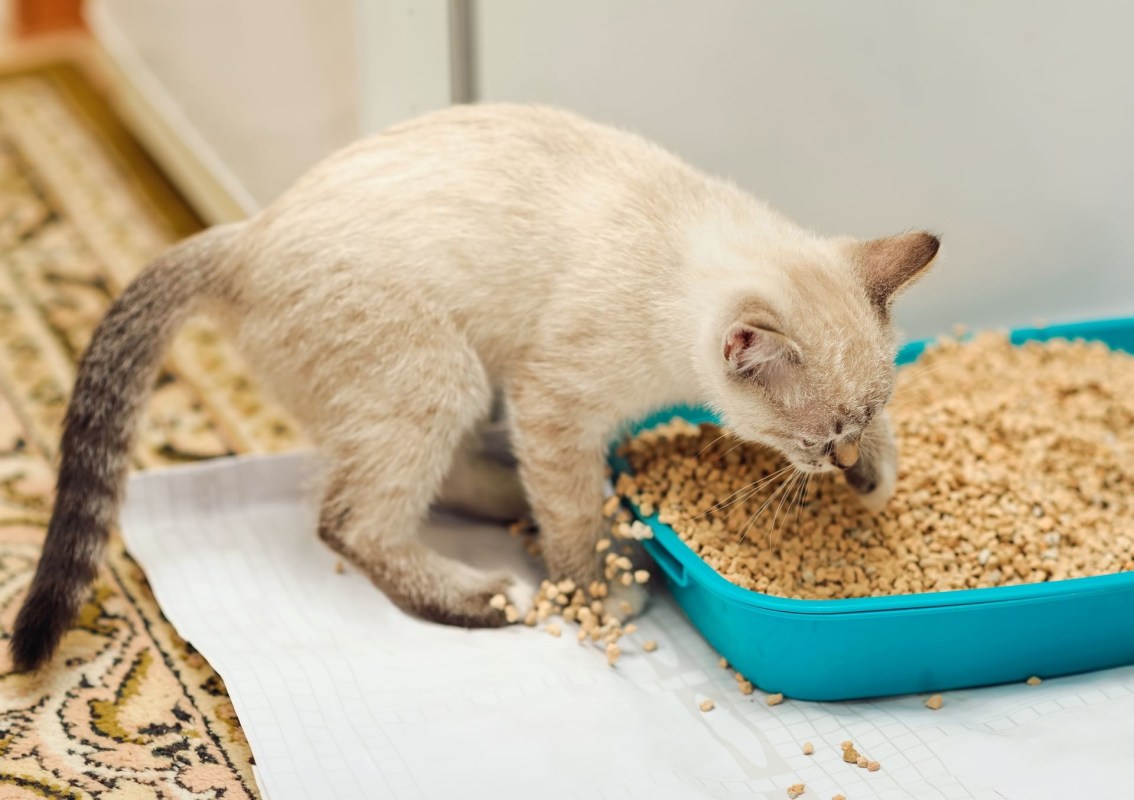Traditional clay cat litter may soon lose popularity as more cat owners are noticing the downsides of the long-used pet product.
For one, it isn't biodegradable, meaning that it ends up taking up space in landfills indefinitely. It takes up even more space than you realize since the chemical that makes it clump together means that it swells up to 15 times its volume when moisture enters.
Even more scarily, clay litter creates silica dust, which can decrease air quality and cause respiratory issues for you and your cat.
So, what biodegradable kitty litter alternatives are there, and what's best for your home and your pet?
Luckily, one environmental ecologist has broken down the pros and cons of both wheat-based litter and corn-based litter and shared the results.
What are the benefits of wheat and corn-based litter?
Both corn and wheat litter are flushable, produce far less dust, and control odor better without the use of artificial fragrances.
According to the ecologist, wheat-based litter is slightly preferable because it more closely mimics the texture of clay litter, making it easier on your cat's toes and a smoother transition from traditional options.
What are the drawbacks?
Wheat and corn litter can develop a fungus called "aflatoxins," which grows when the litter dampens from cat urine or humidity. It can potentially be very harmful to your cat, so make sure to keep the litter fresh.
Why is this important?
The bottom line is that environmentally friendly cat litter is better for both your cat and the environment, as long as you keep that pesky fungus at bay.
Since clay and silica crystals are not biodegradable, they end up sitting in landfills effectively forever.
Meanwhile, biodegradable litter can decompose in six months to a year, meaning your cat's environmental pawprint will be extremely small.
Join our free newsletter for easy tips to save more, waste less, and help yourself while helping the planet.









